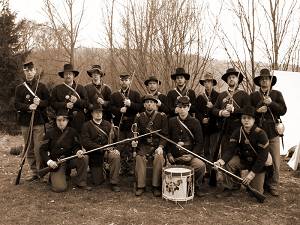Hallo liebe Zivilisten,
I have some Question about Jam. I am looking for recipes of Jam and Marmelade in the civilwar era, because my Father cooks evry year his own jam, and I hope he can made me authentic Jam. How was this jam stored ? In "Steingut"? ( i dont know the exact translation for this, there are some words for this like creamware, crockery, earthenware or stoneware) or Glas, what was the contence of this "containers"
How common was Jam? How did they store Jam in "boxes from Home"
Danke für eure Hilfe (Thanks for your help)
Viele Grüße
I have some Question about Jam. I am looking for recipes of Jam and Marmelade in the civilwar era, because my Father cooks evry year his own jam, and I hope he can made me authentic Jam. How was this jam stored ? In "Steingut"? ( i dont know the exact translation for this, there are some words for this like creamware, crockery, earthenware or stoneware) or Glas, what was the contence of this "containers"
How common was Jam? How did they store Jam in "boxes from Home"
Danke für eure Hilfe (Thanks for your help)
Viele Grüße




Comment